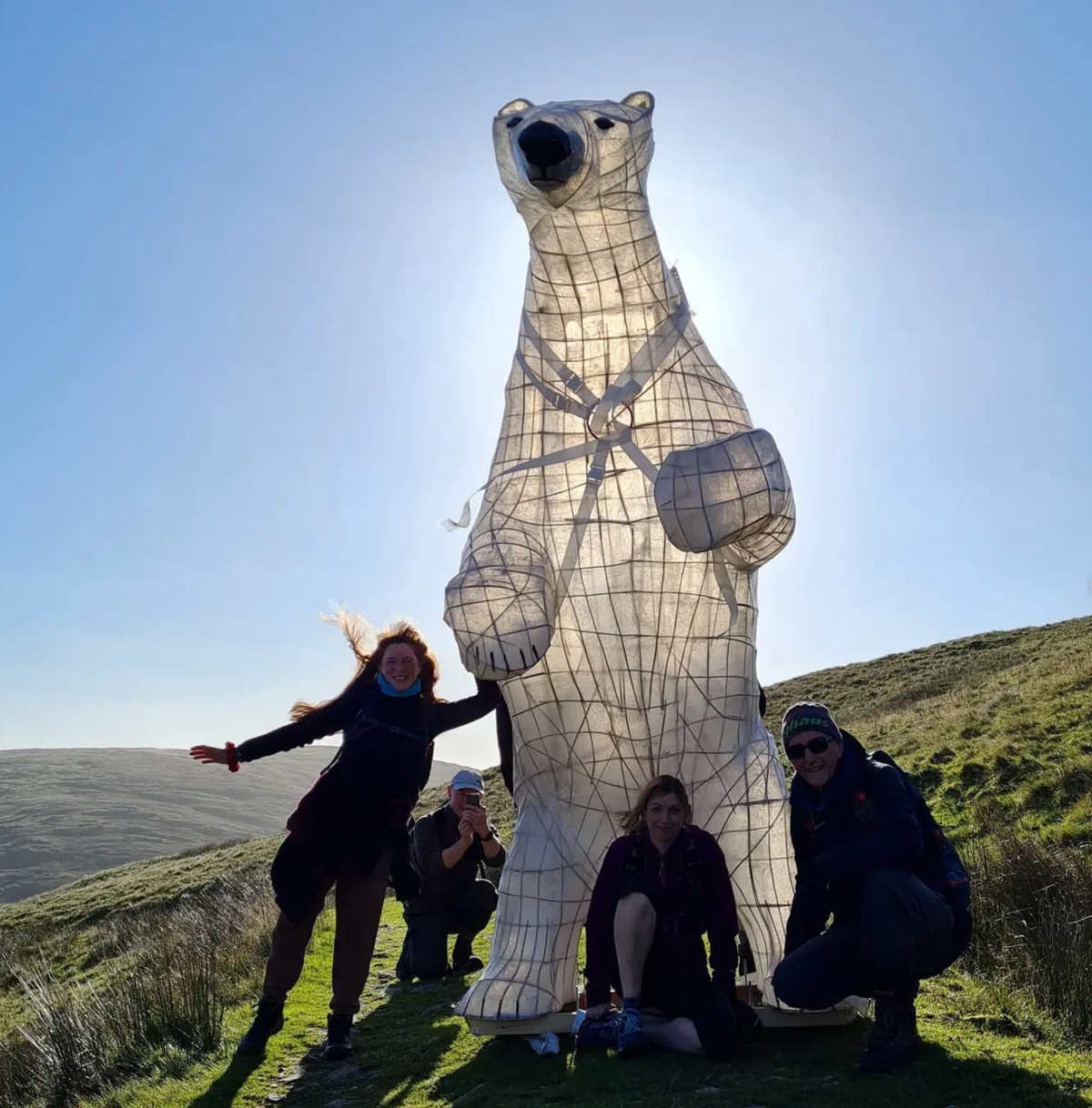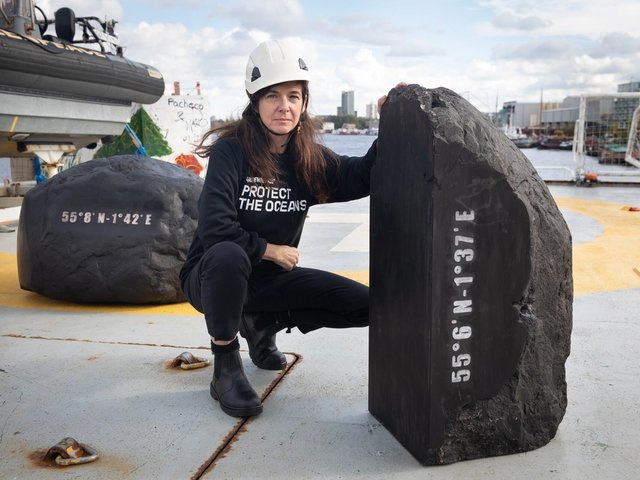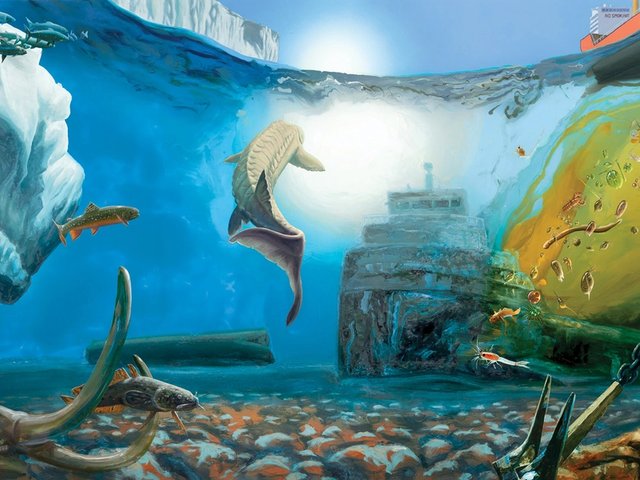As politicians and eco experts from around the world descend on Glasgow for the 26th UN Climate Change Conference, Cop26 (31 October-12 November), artists across the UK are marking the event with environmentally-themed works designed to highlight the current climate crisis.

Rendering of the installation indestructible language at The Schoolhouse, Glasgow for COP26 ©2021 Mary Ellen Carroll, MEC studios with drone photography by Dougie Lindsay
Indestructible language, Mary Ellen Carroll
Visitors and residents of Glasgow cannot fail to miss a monumental neon work located on the roof of The Schoolhouse, a Victorian building in the city centre. The piece by the New York-based artist Mary Ellen Carroll, titled Indestructible Language, consists of eight-foot high illuminated red neon characters made of lead-free glass, powered 100% by renewable energy, spelling out the phrase: It Is Green Thinks Nature Even In The Dark.
The work goes live at 7pm on 30 October (until 31 January 2022); it is backed by numerous sponsors including the Texas-based TransArt Foundation and the Turtle Conservancy charity in California.
A project statement explains that the wording needs to be separated: “'It Is' states a condition—that the climate emergency is one of extreme relevance and a scientific fact—while 'In The Dark' is a formal declaration: the work is only visible in the dark and this reflexive statement questions the viewer’s decision to choose to engage with or ignore the issue.”
“Artists can, and do make a difference in these 'existential' issues. It is also a question of artists or everyone for that matter to get involved. A work of art can amplify the necessary actions in policy and collectively we must all commit to thinking acts,” Carroll tells The Art Newspaper, adding: “It is necessary for us all to step up and act in the climate emergency.”
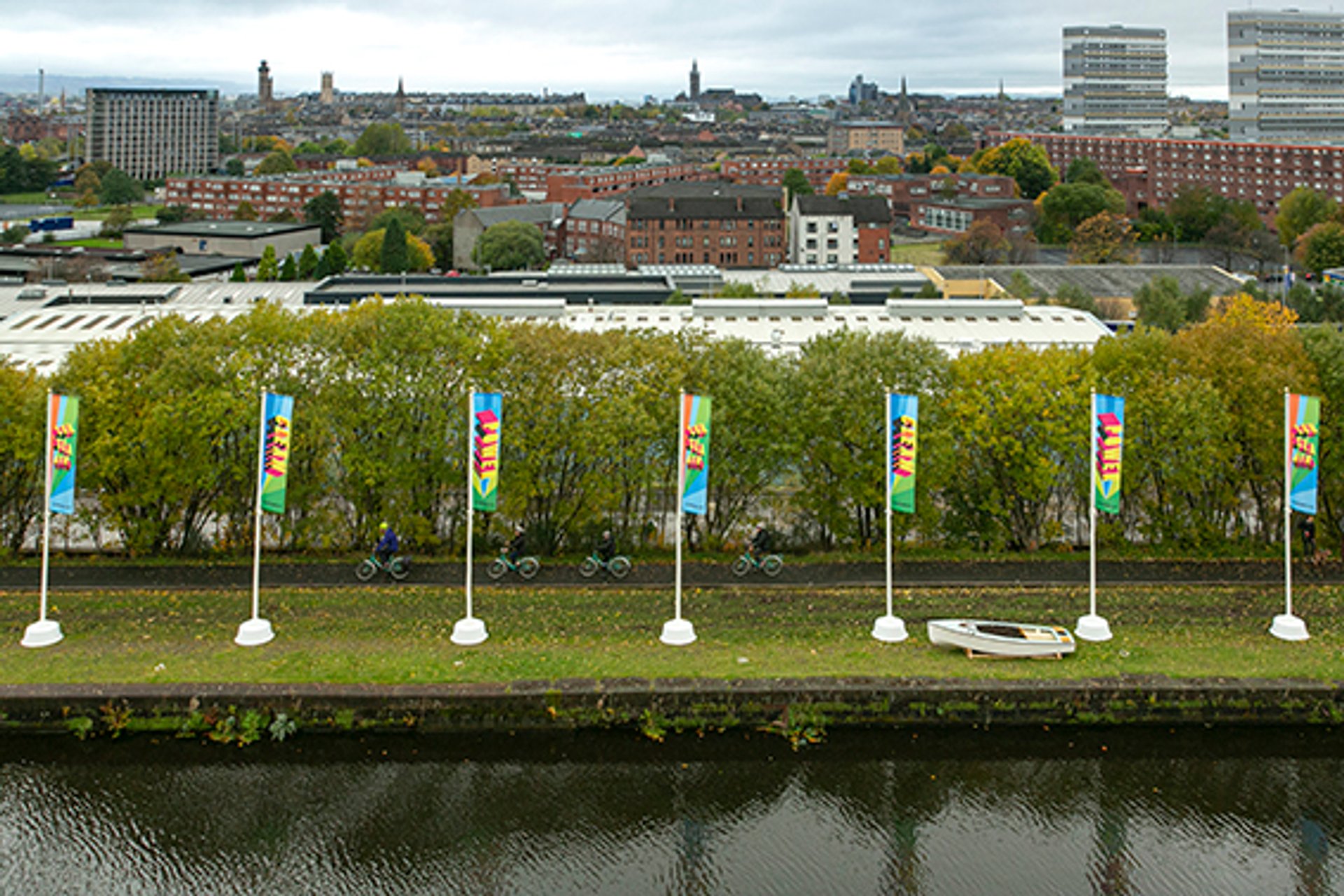
Morag Myerscough's Clean Power Photo: © Gerardo Jaconelli
Clean Power, #TogetherBand and Morag Myerscough
Flags and banners will spring up around Glasgow from today emblazoned with the words Sun, Sea, Air and Clean Power. This citywide display is organised by the non-profit organisation #TogetherBand which commissioned the London-based artist Morag Myerscough to design the public art works for its Clean Power campaign. The point of the piece is to “support the international drive to bring carbon dioxide emissions to net zero by 2050”, #TogetherBand say.
The works, made from recycled ocean plastic, will appear across the city, with 40 giant flags on show along the Scottish Canals. The campaign is due to tour to different cities across the UK before arriving on London’s Regent Street in March for Earth Hour.
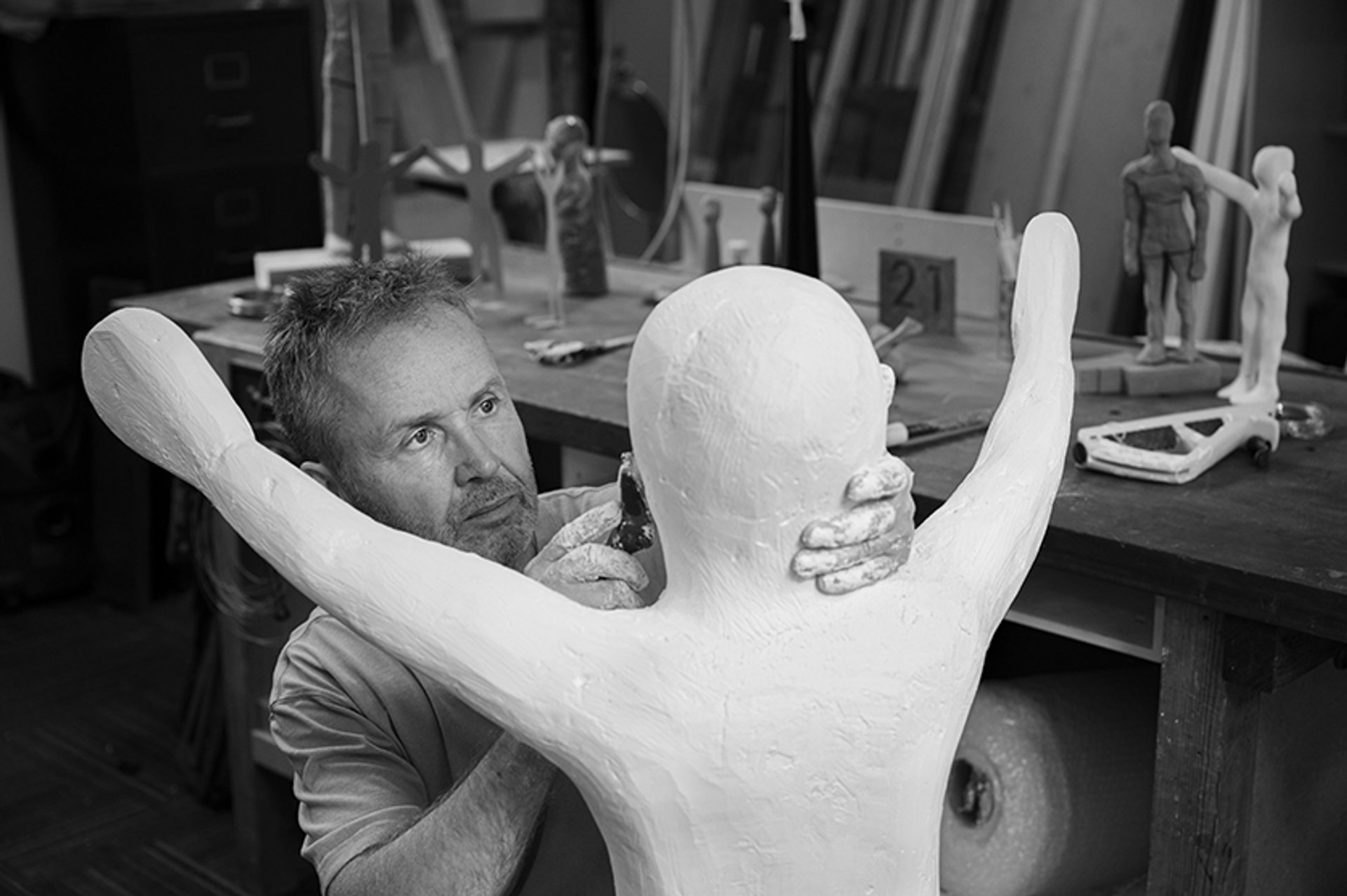
Steuart Padwick in his studio © James Rudoni
Hope Sculptures, Steuart Padwick
The UK designer Steuart Padwick will unveil next week three large-scale sculptures around Glasgow that were made with the help of celebrated Scottish writers and poets. Jackie Kay, Ali Smith, and the 2020 Booker Prize winner Douglas Stuart are among the writers who have contributed poems that feature on Padwick's three large-scale, sustainably produced works located at three sites across the city.
The central piece,The Hope Sculpture, is a 23.5m-high structure towering over Clyde Gateway’s woodland park at Cuningar Loop. “The monumental sculpture’s high slender columns take their form from the brick chimney stalks that once littered the East End of Glasgow,” the statement adds although this work is made from low-carbon and 100% cement-free concrete.
A second sculpture, Beacon of Hope, is located at Glasgow Central Station while another piece, Hope Triptych, is sited at the University of Strathclyde’s Rottenrow Gardens. The trio of sculptures are another reminder for city dwellers of environmental concerns and the “imperatives of the ongoing climate crisis”, the organisers say.
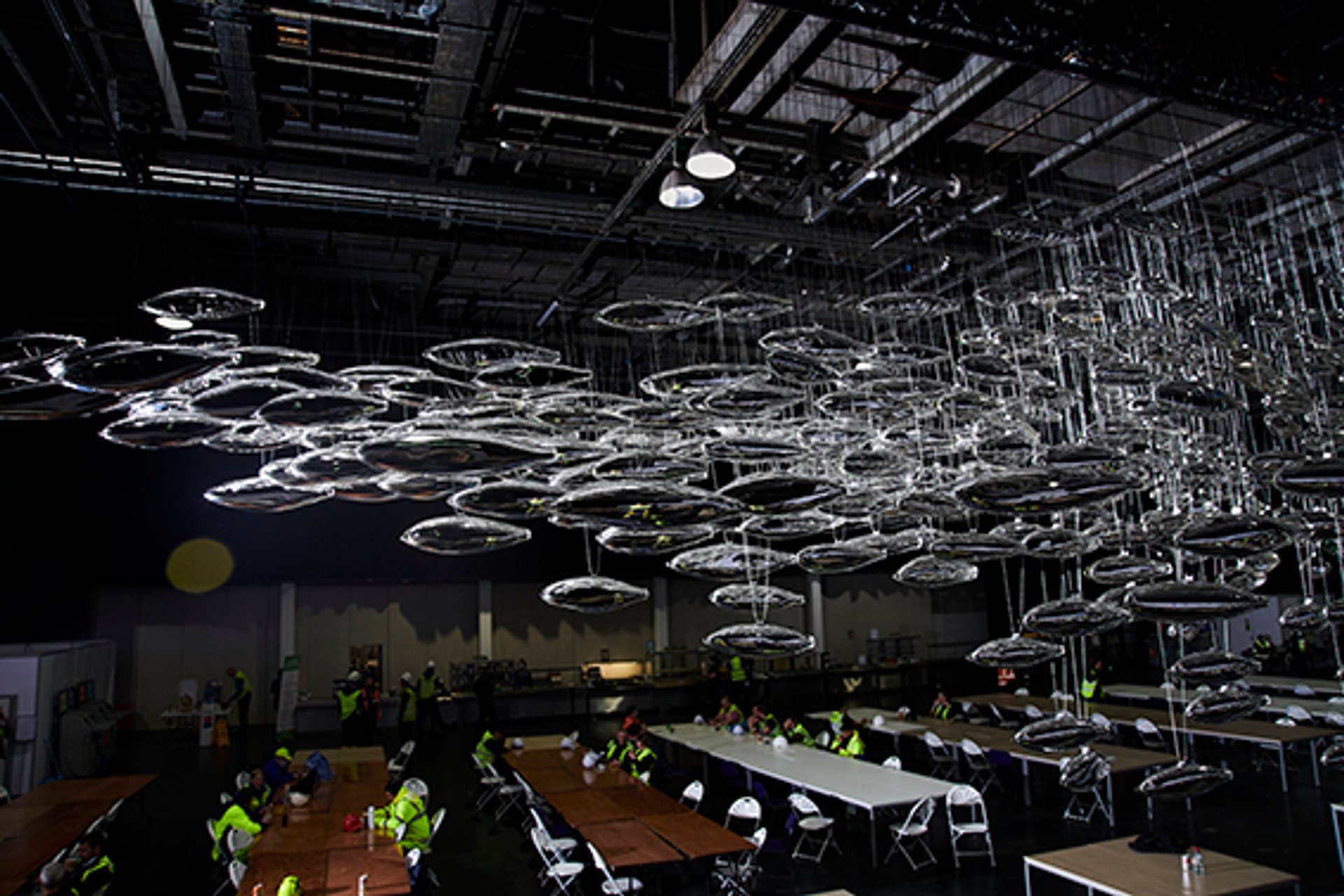
Joseph Rossano's Salmon School being installed at the Blue Zone at COP26 © the artist
Salmon School, Joseph Rossano
A sculpture made of 350 mirrored hand-blown glass forms is located at the heart of Cop26 in the Blue Zone area of the summit. Salmon School, a sculpture created by Joseph Rossano, reflects a basic imperative for healthy living on earth. “Cold, clean water is critical for wild salmon survival and is vanishing due to rising global temperatures, pollution, deforestation, and damming, all caused by humans,” according to a project statement.
Rossano commissioned artists and makers from across the Pacific Northwest, and in Norway, Japan, and the UK, to craft the glass objects that make up Salmon School. The piece is backed by the Missing Salmon Alliance, a group of UK-based conservation-focused organisations. The fish-based work will go on show next year at the Museum of Glass in Tacoma, Washington.
City of Trees, Matthew Rosier
In London, artist Matthew Rosier will project life-size video images of ancient oak, beech and hornbeam trees from Epping Forest onto the tower of St Mary Aldermary Church in the City of London accompanied by a musical soundscape created by James Bulley (City of Trees, 4-10 November). The City of London owns Epping Forest, which is located in the county of Essex; the City of London Corporation commissioned the work.
“I wanted to raise awareness of the symbiotic relationship that used to exist between humans and forests in England. The installation’s opening coincides with Cop26 to highlight the value of productive, truly sustainable and biodiverse forestry in addressing climate change and restoring our woodland habitat,” Rosier says. Visitors pondering the tree projections can also sit on two halves of a recently felled oak tree from Epping.
“I don’t think environmental artwork in its own right necessarily makes ‘a difference’, but this movement is cultivating a culture of environmental care and awareness that I do think shapes public sentiment, and helps create the political context required for action,” he tells The Art Newspaper.
Clarion, Bamber Hawes
And finally…. Artist Bamber Hawes is carrying a polar bear sculpture to Cop26 across the country, from Shropshire to Scotland, on a 306-mile trip. The 10ft-high bear, called Clarion, is made from bamboo, willow" and layers of tissue paper. Hawes’s bear-toting odyssey has prompted discussions en route about the issues around ecological concerns, he says. Hawes set out on 10 October and has reached Scotland according to his Instagram feed, where he has posted this: “The road is long, With many a winding turn, That leads us to who knows where, But I’m strong, Strong enough to carry him, He ain’t heavy, he’s my brother, He’s my polar bear.”
UPDATE (2 November): Other art projects and exhibitions accompany Cop26.

Mountaintops to Moonscapes: Mountaintop Removal Mining, Wise County, Virginia, 2012. Alan Gignoux.
Bruised Lands, Alan Gignoux
The US documentary photographer Alan Gignoux gives a snapshot of the earth’s depleted resources in a series of four interconnected bodies of work created over ten years on show at Wasps the Briggait in Glasgow (until 12 November). “Bruised Lands documents the relentless harvesting of natural assets and is a graphic and timely testament to the serious impact that industrial processes are having on the global environmental crisis,” a press statement says. Gignoux’s images span the globe, shifting from the Oil Sands of Canada to the Russian Urals, depicting the reality of fossil fuel and mineral extraction around the globe (in Appalachia, more than 800,000 miles of ancient forest have been destroyed to make way for coal mining). The exhibition will be accompanied by the launch of the publication Mountaintops to Moonscapes on 5 November.
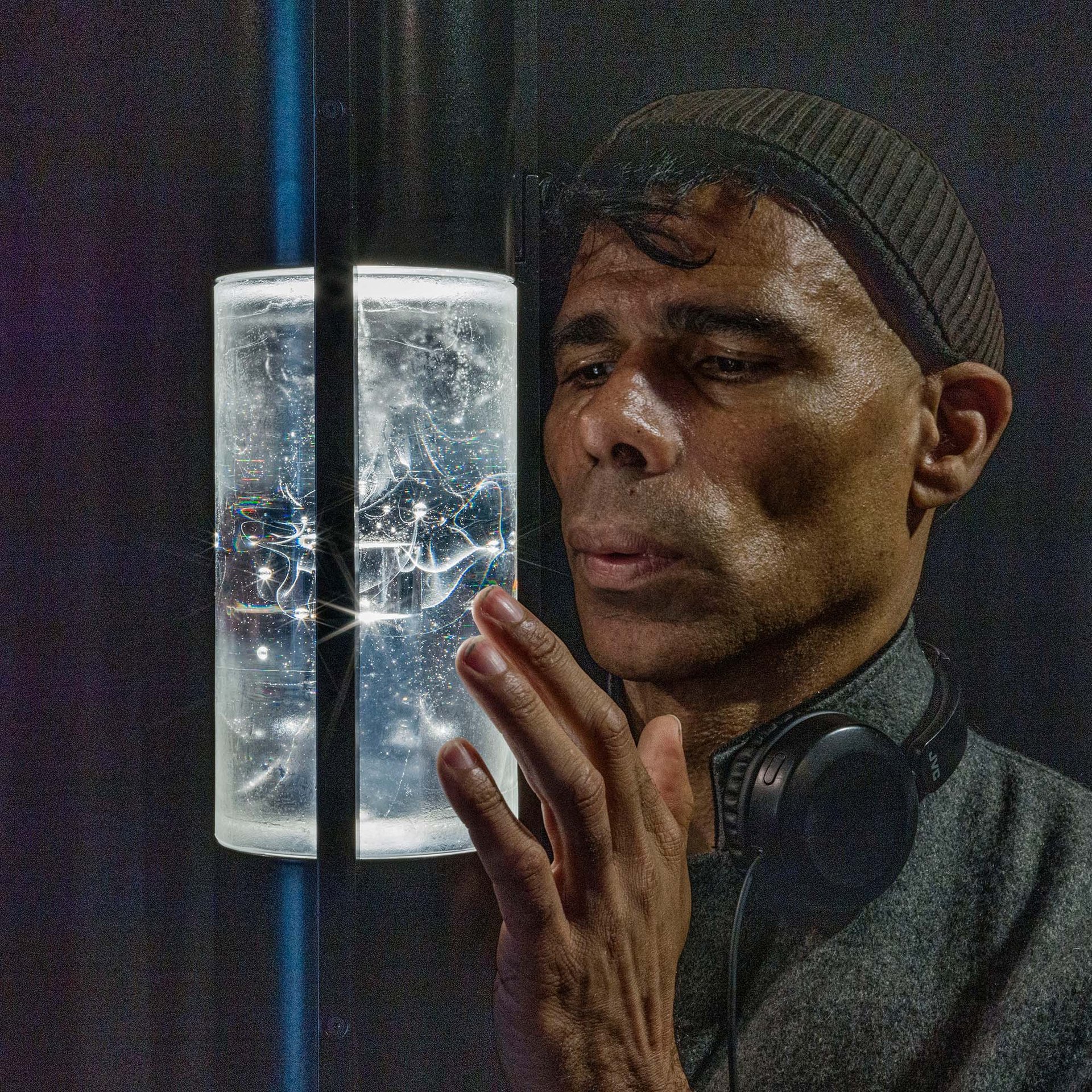
Wayne Binitie, Polar Zero Royal College of Art
Polar Zero, Wayne Binitie
Wayne Binitie, a PhD candidate at the Royal College of Art in London, is behind this important and timely exploration of the hidden histories written in polar ice. A cylindrical glass sculpture encasing Antarctic air from the year 1765 and an Antarctic ice core containing trapped air bubbles—providing a slice of the climate from centuries past—form the centrepieces of the Polar Zero exhibition at Glasgow Science Centre (until 12 November). “It’s my hope that people who experience these works will gain a better understanding of humanity’s impact on the natural environment and its climate systems,” says Binitie in a statement. Polar Zero is a collaboration between British Antarctic Survey, the engineering firm Arup and the Royal College of Art; the project is funded by the Arts and Humanities Research Council.


